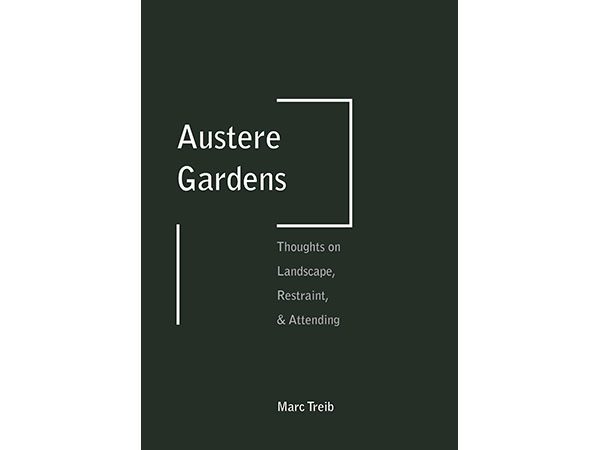
Author: Marc Treib (ORO Editions, 2016)
With no less than sixteen books under his belt focused on landscape and architecture and countless contributions to a wide variety of similarly themed magazines, one might assume that Professor Emeritus of Architecture at UC Berkley Marc Treib has said about as much as one could say on the subject. In fact, the opposite is the case, as over three decades of writing seems to have increased the pace of his contributions, not diminished them.
With two books being published a month apart—John Yeon: Modern Architecture and Conservation in the Pacific Northwest in December 2016 and Landscapes of Modern Architecture: Wright, Mies, Neutra, Aalto, Barragán in January 2017—Treib casually managed to slip in the wonderful publication of Austere Gardens: Thoughts on Landscape, Restraint, and Attending, a few months prior.
Building on the wealth of knowledge gained by writing and thinking about how humans make their mark on the surface of the earth, Trieb’s pensive meditation on the power of modest, restrained environments adds volumes to the book’s unpretentious 100-page frame.
Richly illustrated with beautiful photographs, Trieb’s gaze looks well beyond ‘gardens’, in the typical sense, to include art and large-scale landscape design. Flowing seamlessly between these disciplines, he constructs a strong argument around the beauty of under-appreciated, simple, reduced interventions. As he states:
Austerity here lies in the acceptance—or adoption, if consciously made—of few prevailing materials, or even only one….These acts of limiting, and the focus that results, parallel the distinctions between the delicate sound of a chamber miscue trio and the massive assault of a symphony orchestra or large choir. In the former, the voice of each instrument is discernible yet part of a composite tone. In the latter, we become more conscious of the harmonies and impact of instruments and voices as a congregation….As in music, the fewer the voices, the greater the significance assigned to each, although greater effort may be required for appreciating the individual contribution.
The content itself is written in long-form style, as one continuous piece, but is divided into smaller sections—Gardens, Rereading, Trace and Intent, Response, Clues, Revelation, Adding & Subtracting, Digging & Piling, Figure, Void, Ambiguity, Reduction, Choice or Need, Efficiency, Attending, and Afterword—most of which are a page or two in length.
With its interdisciplinary reach, humble packaging, and contemplative content, Austere Gardens offers much needed relief from the overindulgence and excess so common in the world today—keeping us focused on making the most with limited means, while ensuring we get the poetry of place required by the human spirit.
***
For more information on Austere Gardens: Thoughts on Landscape, Restraint, and Attending, visit the ORO Editions website.
**
Erick Villagomez is one of the Editor-in-Chief at Spacing Vancouver. He is also an educator, independent researcher and designer with personal and professional interests in the urban landscapes. His private practice – Metis Design|Build – is an innovative practice dedicated to a collaborative and ecologically responsible approach to the design and construction of places. You can see more of his artwork on his Visual Thoughts Tumblr and follow him on his instagram account: @e_vill1.


